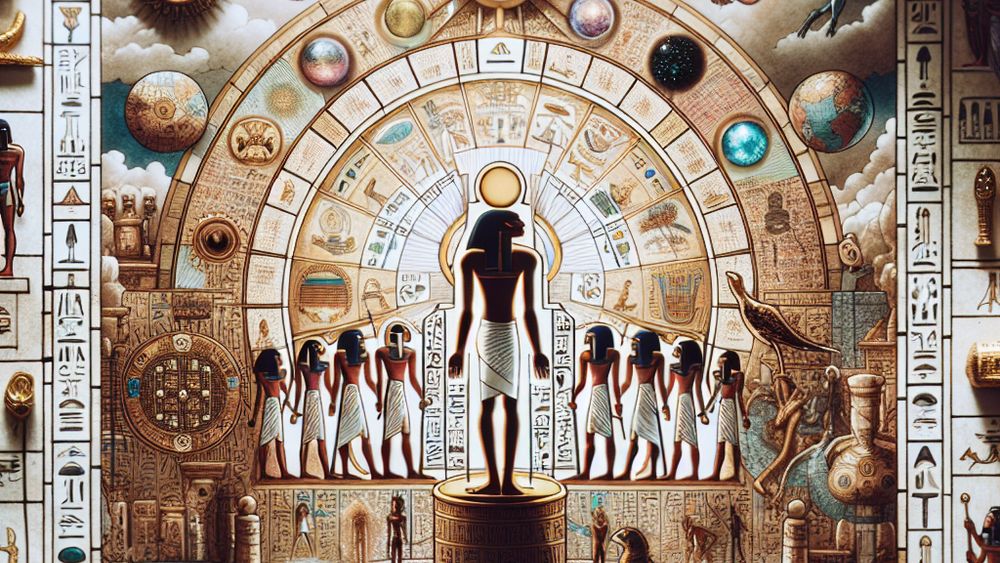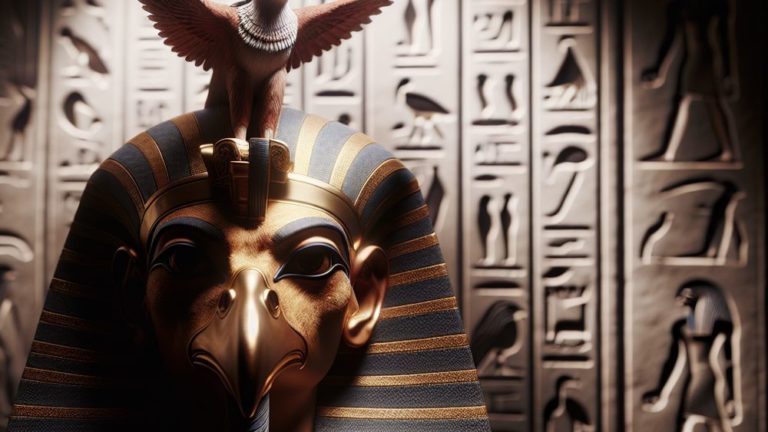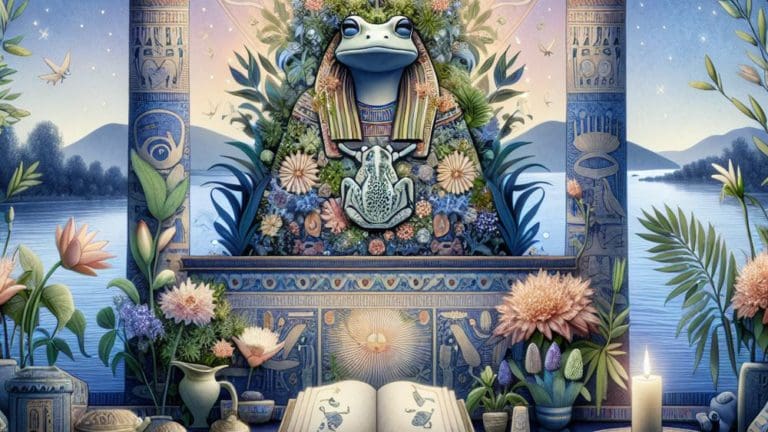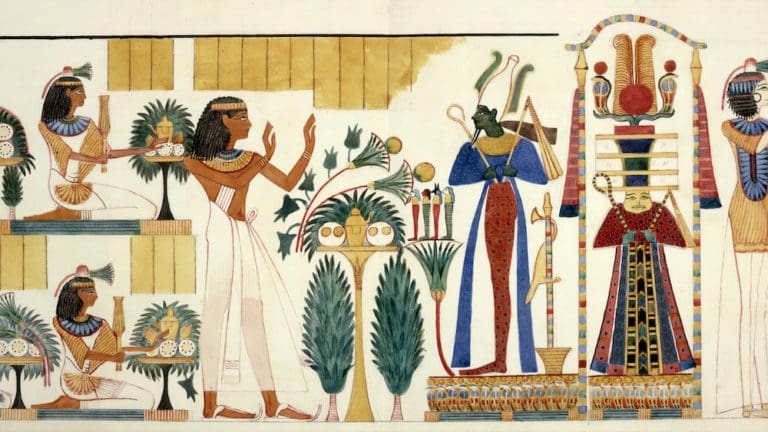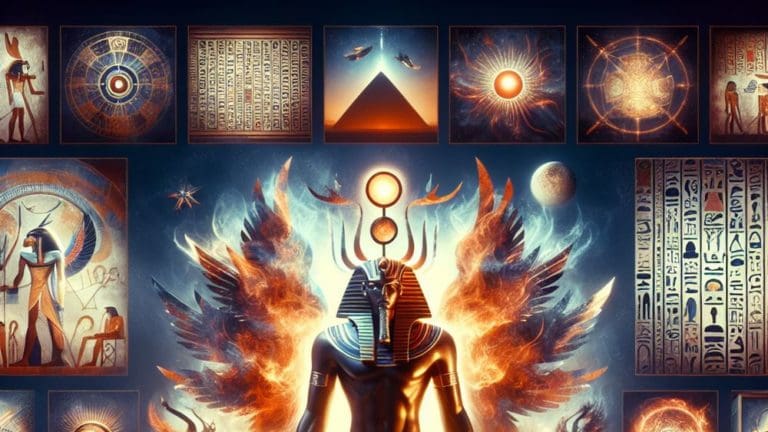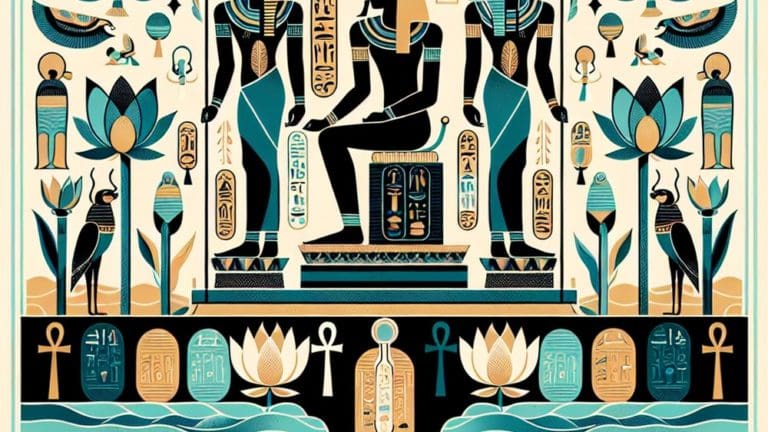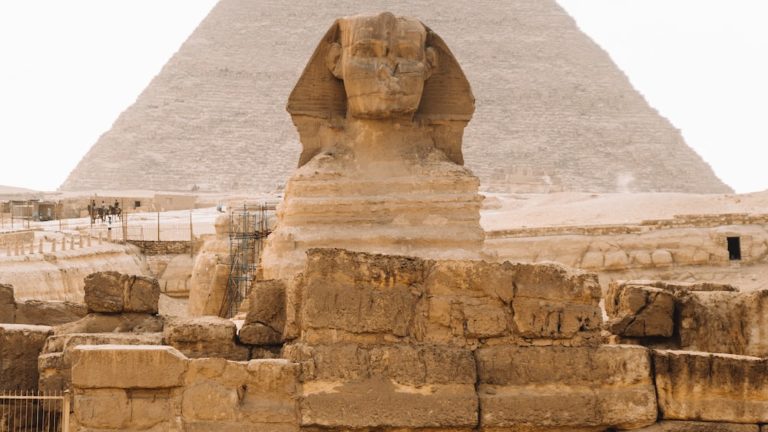The Resurrection Myth Of The Egyptian God Asar
The Resurrection Myth Of The Egyptian God Asar
Have you ever felt the thrilling pulse of uncovering ancient secrets that have been sand-covered for millennia? Imagine standing at the dawn of civilization, where myths were not just stories, but the backbone of culture, morality, and everyday life. Among the pantheon of Egyptian deities, the Egyptian god Asar stands as a figure shrouded in mystery, embodying the eternal cycle of life, death, and rebirth. Join me on this captivating journey to unveil the mystique surrounding Asar, whose legend has enthralled historians, travelers, and seekers of the unknown through the ages.
Key Points:
- The Egyptian god Asar (Osiris) embodies the cycle of life, death, and rebirth in ancient Egyptian mythology.
- Asar’s origins trace back to early Egyptian texts, symbolizing fertility and growth.
- Asar’s resurrection myth involves betrayal, love, and redemption through the efforts of Isis, his wife.
- Symbols like the crook and flail, Djed pillar, and green skin represent Asar’s resurrection and eternal life.
- Asar’s myth influenced Egyptian culture, shaping beliefs in the afterlife, mummification practices, and social norms.
- Parallels between Asar and other deities worldwide highlight universal themes of death and rebirth.
- Exploring Asar’s story connects us to ancient Egyptian spirituality and the cyclical nature of existence.
Delving into the enigmatic origins and resurrection myth of Asar requires us to tread carefully on sacred ground, piecing together ancient texts, archeological findings, and the wisdom of scholars. It’s a quest that beckons us into the heart of Egyptian mythology, where gods and goddesses lived out tales of passion, betrayal, and redemption that continue to resonate with our deepest human experiences today. So, fasten your seatbelts; we’re about to embark on a truly time-traveling adventure into the world of ancient Egypt.
The Enigmatic Origins of Asar
The story of the Egyptian god Asar begins in the fog of antiquity, where myth and history converge. Asar, better known to many by his Greek name, Osiris, is a deity whose influence permeated every aspect of ancient Egyptian culture, religion, and kinghood. Deciphering his origins opens a window into the beliefs, values, and aspirations of a civilization that has laid the foundational stones of our understanding of the ancient world.
Etymology and Early References
The name ‘Asar’ holds within its syllables keys to the past, a name that has evolved through ages and translations. Initially, Asar was depicted as a symbol of fertility and growth, a reflection of Egypt’s life-giving Nile.
- Asar is noted in the earliest Egyptian texts, linking him with the land’s fertility.
- The Pyramid Texts, some of the oldest religious writings in the world, provide our first glimpse into Asar’s role as a symbol of life, death, and resurrection. [1]
- By the time of the Middle and New Kingdoms, Asar had become not just a local god but a central figure in the state religion, embodying the quintessential pharaoh.
- The term ‘Osiris’ is a Greek adaptation of the Egyptian name ‘Asar’, showcasing the blend of cultures and the widespread influence of Egyptian mythology.
The name ‘Asar’ symbolizes fertility, growth, life, death, and resurrection, showcasing the evolution and significance of Egyptian mythology.
Asar in the Context of Egyptian Mythology
Asar’s place in Egyptian mythology cannot be overstated; he is the linchpin around which the entire pantheon and religious beliefs revolve.
- As the god of the underworld and judge of the dead, Asar played a crucial role in the concept of the afterlife, promising resurrection and eternal life to his followers.
- His relationship with other deities, such as Isis (his sister and wife), Set (his brother and rival), and Horus (his son), forms the backbone of Egyptian cosmology, offering a rich tapestry of myths and legends.
- In funerary texts like the Book of the Dead, Asar is depicted as a compassionate judge, offering hope for the souls navigating the afterlife.
- Festivals celebrating Asar, especially the Osiris Mysteries, were central to the Egyptian calendar, reflecting his integral role in the life of the Egyptian people.
The Mythology Surrounding Asar’s Resurrection
The story of Asar’s death and resurrection is a cornerstone of Egyptian mythology, encapsulating themes of betrayal, love, revenge, and redemption. It’s a narrative that echoes through the corridors of history, offering a glimpse into the ancient world’s heart and mind. This timeless tale not only entertained but also offered solace and understanding of life’s cyclical nature, fostering a connection between the Egyptian people and the divine.
The Tale of Asar, Isis, and Set
The enigmatic tale of Asar, Isis, and Set is one that has captivated historians and mythology enthusiasts alike. It’s a story rich in betrayal, love, and the quest for justice, set against the backdrop of the ancient Egyptian pantheon.
- Asar, known to the Greeks as Osiris, was a benevolent Egyptian god of the dead and fertility, embodying life, death, and rebirth.
- Isis, his sister and wife, was a powerful goddess of magic and healing, whose devotion to Asar knew no bounds.
- Set, Asar’s brother, was the god of chaos, envy, and discord, who famously murdered Asar in a fit of jealousy.
Through deceit and cunning, Set traps and dismembers Asar, scattering his pieces across Egypt. It is through the undying love and magic of Isis, that Asar is reassembled and resurrected, albeit in the underworld.
This tale not only explores themes of good vs evil, but also the enduring power of love and the belief in life after death. It sets the stage for Asar’s son, Horus, to avenge his father and restore order, emphasizing the Egyptian values of justice and balance.
The tale of Asar, Isis, and Set delves into themes of betrayal, love, justice, and the eternal power of love and belief in life after death.
Symbols and Significance of Asar’s Resurrection
The resurrection of Asar is a cornerstone of Egyptian mythology, encapsulating deep symbols and meanings. It highlights death as a mere transition and the cyclical nature of life. [2]
| Symbol | Significance |
|---|---|
| Asar’s Crook and Flail | Kingship and Fertility |
| The Djed Pillar | Stability, Resurrection, and the Eternal Life of Asar |
| Green Skin of Asar | Rebirth and Resurrection |
These symbols serve as potent reminders of the eternal struggle between order and chaos, and the undying hope in rebirth and eternal life.
The Influence of Asar’s Myth on Egyptian Culture
The myth of Asar’s resurrection had a profound impact on Egyptian culture, influencing not only religious practices but also social norms and artistic expression.

- It laid the foundation for the Egyptian belief in the afterlife and the importance of mummification.
- The myth fostered the rise of a complex cult centered around Asar, which saw Egyptians engage in ceremonial rituals and offerings to honor and appease the god.
- Egyptian kings often identified themselves with Asar, symbolizing their role as protectors of the land and ensurers of fertility.
This narrative reinforced the Egyptian understanding of life as a cycle of death and rebirth, with Asar as the eternal protector guiding souls in the underworld. Such beliefs shaped the moral and ethical fabric of Egyptian society, encouraging virtues of loyalty, justice, and the pursuit of harmony.
FAQs
1. How did Asar become associated with resurrection?
Asar became associated with resurrection through his own myth of death and rebirth. After being murdered and dismembered by Set, Asar was reassembled and revived by Isis, enabling him to become the lord of the underworld. This story symbolized the cycle of life, death, and rebirth, cementing Asar’s role as a god of the afterlife and resurrection in Egyptian religion.
2. What are the key symbols associated with Asar?
The key symbols associated with Asar include the crook and flail, which signify his role as a shepherd of the souls in the afterlife. Another significant symbol is the Djed pillar, representing stability, resilience, and Asar’s backbone, a crucial part in his resurrection story. These symbols embody the essence of Asar’s power over life and death, deeply influencing ancient Egyptian iconography.
3. In what ways did Asar’s myth influence ancient Egyptian rituals?
Asar’s myth deeply influenced ancient Egyptian rituals, particularly those related to burial and the afterlife. Practices such as mummification reflect the desire to emulate Asar’s resurrection, ensuring the deceased a rebirth into the afterlife. Moreover, ceremonies invoking Asar’s triumph over death were integral, aiming to secure his blessings of fertility and renewal for the land and its people. [3]
4. Can parallels between Asar and other deities in world mythologies be drawn?
Parallels between Asar and other deities in world mythologies can indeed be drawn, highlighting a universal theme of death and rebirth. For example, similarities with figures like the Greek god Dionysus, who also embodies resurrection and fertility, suggest a common mythological archetype spanning across cultures. This underlines a shared human fascination with the cycles of life, death, and the possibility of an afterlife.
Conclusion
Exploring the enigma that surrounds the Egyptian god Asar reveals not only the depth of ancient Egyptian spirituality but also connects us to a universal narrative that spans across cultures and epochs. Asar’s story, a tapestry of love, betrayal, death, and resurrection, enriches our understanding of how ancient Egyptians viewed life, death, and the afterlife, emphasizing the cyclical nature of existence.
This exploration into the mythical past, with its gods and symbols, beckons us to ponder on our own beliefs about the end and what may lie beyond. As enthusiasts, amateurs, or just curious minds, there is always more to unearth in the rich soils of history. I invite you to continue this journey with me, delving deeper into the mysteries of the past and sharing the stories of those who have long transcended into the annals of history. And remember, every artifact, every hieroglyph, connects us a little more to the eternal story of the Egyptian god Asar. Until next time, safe travels and happy explorations.
Warm regards,
Cedric

